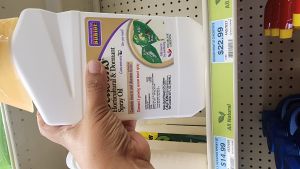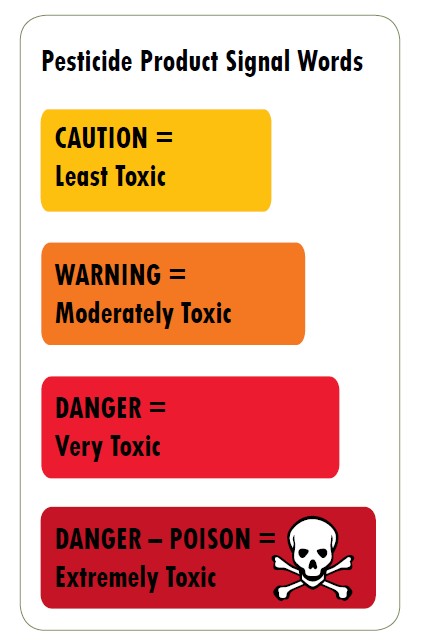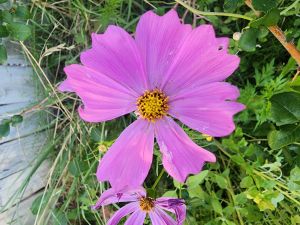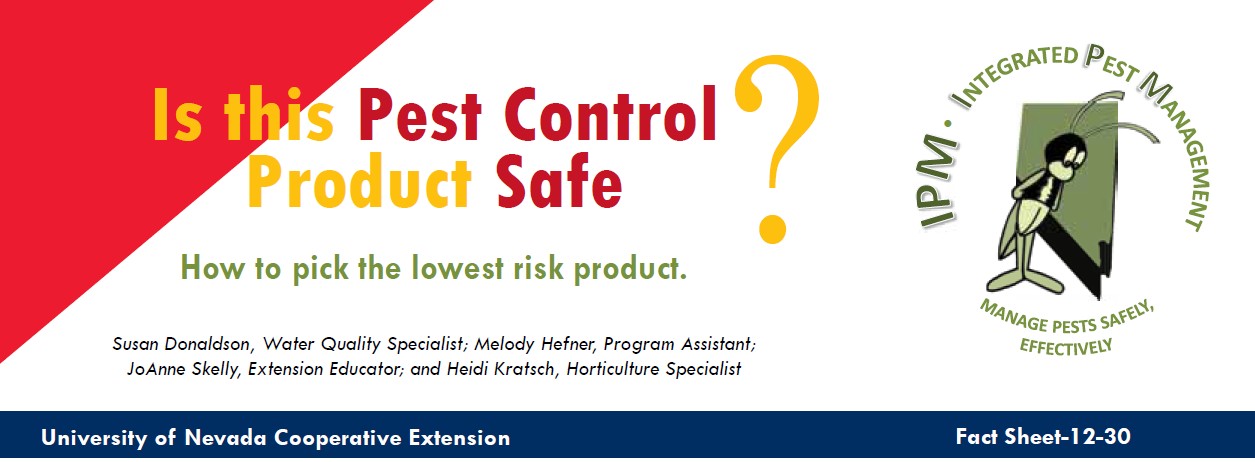Have you ever stared at a shelf of pest-control products, bewildered?
When the U.S. Environmental Protection Agency registers pesticides, they use the results of many scientific studies to assess pesticide toxicity, or the ability of the pesticide to cause harm as a result of a single exposure or dose. They also consider harm from long-term exposure, called chronic toxicity. The manufacturer then places a statement of relative risk on the front of the product label to help the user judge the relative toxicity. These are called “signal words.”

Interpreting Signal Words
- Products labeled with the word “CAUTION” are the safest and have the lowest relative toxicity or corrosiveness. An average adult would have to eat or drink more than one ounce of the product in concentrated form for death to occur.
- Products labeled “WARNING” have moderate toxicity or corrosiveness. Somewhere between a teaspoon and an ounce could cause death when taken by mouth. Smaller amounts could cause severe injury.
- Products labeled “DANGER” or “DANGER-POISON” are the most toxic. These are products that are so toxic that small amounts, as little as a few drops to a teaspoon, could cause death (DANGER-POISON) or severe eye and skin damage (DANGER). Avoid the use of products labeled “DANGER” or “DANGER-POISON.” Leave their use to trained professional applicators.

Your risk of injury from a pesticide depends not only on the toxicity but also on your exposure. Exposure is determined by how much pesticide gets in or on your body during or after the application. Even products that have a signal word of “CAUTION” can harm you if you’re exposed to enough.
So, how are you exposed? Most exposures happen when you get a product on your skin or you breathe it into your lungs. You can avoid both of these by using some common-sense good practices:
- Read, understand and follow all label instructions.
- Use the application rate that is most effective. Don’t use more of the product than permitted by the label–it’s against the law
- Wear the protective equipment listed on the label. At a minimum, you should wear a long-sleeved shirt, long pants and close-toed shoes.
- Use pesticide-resistant gloves. Cotton gloves or cotton-lined gloves will soak up liquids and allow pesticides to get on your skin.
- Wear goggles so products can’t get into your eyes. Follow label directions.
- Don’t smoke, eat or drink while making an application. Stop, remove gloves and wash hands before doing any of these things.
- Wash carefully after using a pesticide or during application if you need to use the bathroom.
- Wash the clothes you wore separately from other laundry.
- Choose products that are sold as “ready-to-use.” These formulas don’t require mixing.
- Remove pet dishes and toys from the application area.
- Let sprays dry before allowing people and pets into the treated area.
- Never pour pesticides into other containers, such as water bottles or soda bottles. Many accidents have occurred when children drank the rebottled products.
- Store products out of children’s reach. Store pesticides away from food, water sources or drains.
- Dispose of pesticides and their containers properly.
Did You Know?
Pesticide risk depends on how poisonous or toxic the product is, and your exposure to the product.
To minimize risk, select products that are less toxic and minimize your exposure.

Be safe! Pesticides are poisons, and it’s up to you to use them safely.

- Carefully select a product after you’ve identified the cause of the problem. Rule out other control methods before using a pesticide.
- Know the name of the active ingredient. This information will be on the front of the product label.
- Look for products labeled “CAUTION.” These are the safest. This information is on the front of the product in capital letters.
- Limit your exposure to the product to reduce risk. Always wear the appropriate protective equipment as listed on the label.
- Keep all pesticides out of reach of children and pets. Pesticides are poisons and should be handled and used with care.


